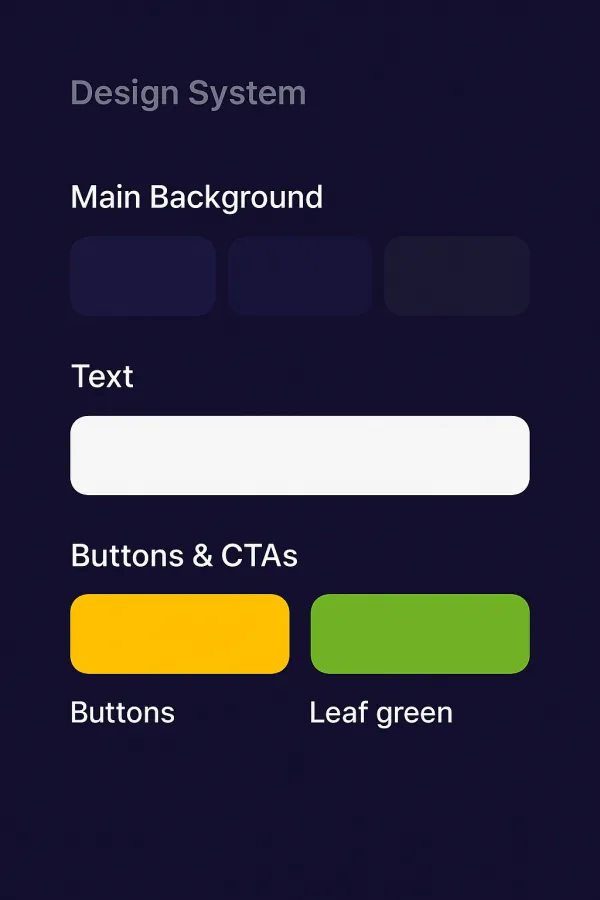Pause – A Mental Health Companion for Hustle Culture







Pause – A Mental Health Companion for Hustle Culture
Pause is a simple, feel-good mental health app made for people who are always on the go but rarely check in with themselves. It gives you a quick space to log your mood, breathe, and reflect — without feeling heavy or clinical. Designed for folks who don’t like traditional therapy apps, it focuses on light daily rituals, gentle design, and small moments of self-care that actually stick.

Priya Singh
Crafting user journeys that convert, delight, and leave a mark.
Project Overview
The Idea Behind It
We live in a world that romanticizes hustle — back-to-back meetings, inbox zero, always-on culture. But somewhere between Google Calendar reminders and Slack pings, burnout creeps in. And for people like Rhea, a 26-year-old product manager at a startup, it hits hard. She doesn’t have the time — or mental bandwidth — to sit through a 30-minute therapy session on her phone. She just needs a moment. Something light, stigma-free, and beautifully simple.
That’s where Pause comes in.
The Problem:
There’s no shortage of mental health apps. But most of them feel clinical, overly structured, or too intense for someone who’s just looking to check in with themselves. High-achieving professionals often delay reflection until it’s too late — mainly because the tools out there are either too heavy or not designed with their lifestyle in mind.
User Persona:
- Rhea, 26, works in product
- Smart, organized, but stretched thin
- She's emotionally aware but not in a dramatic way
- Wants something that fits into her 5-minute coffee break, not a 5-week course
- She hates mental health content that feels like self-help propaganda
Design Philosophy
The core principle was lightness — not just in weight, but in emotional feel. The design had to be:
- Subtle but expressive
- Friendly, not preachy
- Fast, non-distracting, and easy to return to daily
Key Design Decisions
✳️ Components
- Mood Selector: A central ring that responds visually to touch — the more intense the emotion, the stronger the hue shift
- Journaling Cards: Pre-loaded prompts like “What gave you energy today?” — designed to reduce the pressure of a blank page
- Breathing Timer: A soft-loop animation with optional vibration to guide mindful breathing in 60 seconds
- Streak Tracker: Visualized as orbit lines, where each “planet” represents a day you checked in
Fonts
Satoshi: Clean, modern, neutral — used for UI clarity
Playfair Display: Added just enough human warmth for headers and affirmations
Colors
Calm backgrounds: Pale beige, misty blue, and desaturated green
Gradients that reflect your current mood — warmer tones for joy, cooler for calm, muted for sadness
No bright reds, no harsh contrast — nothing that spikes cortisol
Wireframes & Flow
Home Screen: Center ring (mood input) → Prompt appears based on mood → Option to journal or skip
History: A space-like layout — your reflections orbit around a center point, giving a visual sense of emotional rhythm
Settings: Lets you choose preferred check-in time and enable voice-to-text or quiet mode
✨ Final Touches That Made It Feel Human
Microinteractions: Tapping the mood ring gives a slight vibration and ripple — not loud, just affirming
Voice-to-Text Journaling: Perfect for people who reflect better by speaking
Zen Badges: A soft form of encouragement — you’re not penalized for missing a day, but rewarded when you show up for yourself
Outcome & Reflection
Pause isn’t trying to be your therapist. It’s that quiet friend who just asks, “How are you, really?” once a day and then listens without judgment.
It was designed to fit into your day like brushing your teeth — effortless, daily, and grounding.
This project taught me that design for mental health isn’t about features — it’s about feelings. And if people leave the app feeling just 1% lighter than when they opened it, I’d call that a win.
Project Claps
Recent Clappers
Showing 8 of 117 clappers Vishruth Kumar
Vishruth Kumar
 Abundant Deepak
Abundant Deepak
 Abhisek Panda
Abhisek Panda
 Birada PRASON DASH
Birada PRASON DASH
 Pramod Prajapat
Pramod Prajapat
 Rishi Sachan
Rishi Sachan
Project Images
Project Documents
View and download project files
Pause App - User Flow
PDF Document
Discussion
Please log in to join the discussion.








